Introduction of Ethiopian coffee, flavor characteristics of Ethiopian Sidamo Sakui coffee
In the past, people's pursuit of coffee might be neither bitter nor sour, which is the familiar taste of Blue Mountain Coffee. However, with people's understanding of coffee, people's pursuit of coffee is getting higher and higher. Especially after the emergence of Ethiopian coffee, people found that coffee can still have this taste. With the deeper understanding of coffee, we will learn more about the culture of coffee.
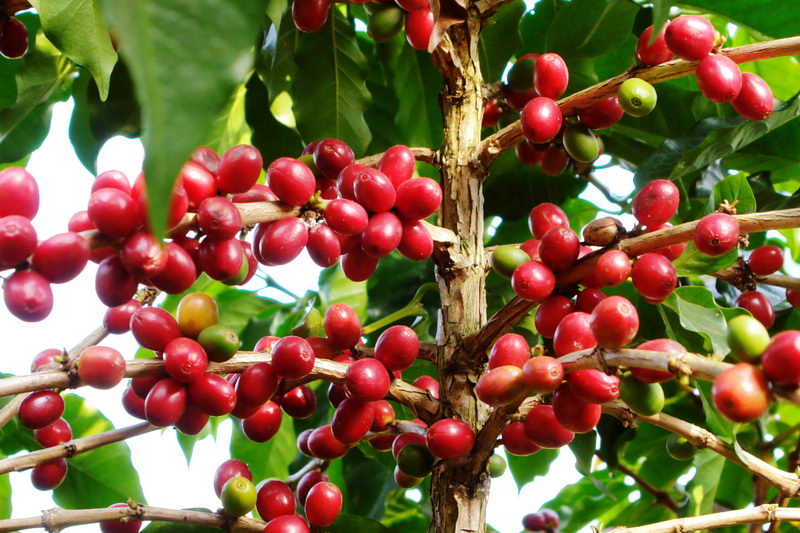
There is a lot of coffee in the world, and Ethiopia is the birthplace of coffee and the gene pool of coffee, from which the variety of coffee extends. The mysterious coffee legend adds more charm to Essel's coffee. Ethiopia is currently the largest coffee producer in Africa, but only 60% of the beans are exported, while the rest are used in various forms of ceremony. for example, at weddings, coffee beans are mixed with coffee syrup, coffee and honey, and various herbs to ward off bad luck. Thus it can be seen that coffee is an inseparable part of the life of the local people in Ethiopia. Of all the coffee-producing countries, Ethiopia is probably the most eye-catching one. Ethiopian coffee with unrestrained floral and fruity aromas is an eye-opener to the diversity of coffee tastes for many coffee workers.
The climate of Ethiopia
Ethiopia's climate is polarized, half of the humid rainforest and half of the arid desert Gobi. The main rainfall season in Ethiopia is three months in 6-7-8, with annual precipitation of 1000-2000 mm and average annual temperature of 15-30 in the main growing areas of coffee. There are many high mountains in Ethiopia, which are tropical cloud forests, and coffee is mainly grown on the plateau. The temperature at high altitude is lower, so there are fewer insect pests, less need for pesticides, and slower ripening speed, so coffee trees can take longer to absorb nutrients. The largest number of rainforest is tall trees, coffee trees with these trees as canopy, fallen leaves as root nutrients, enjoy an excellent growing environment.
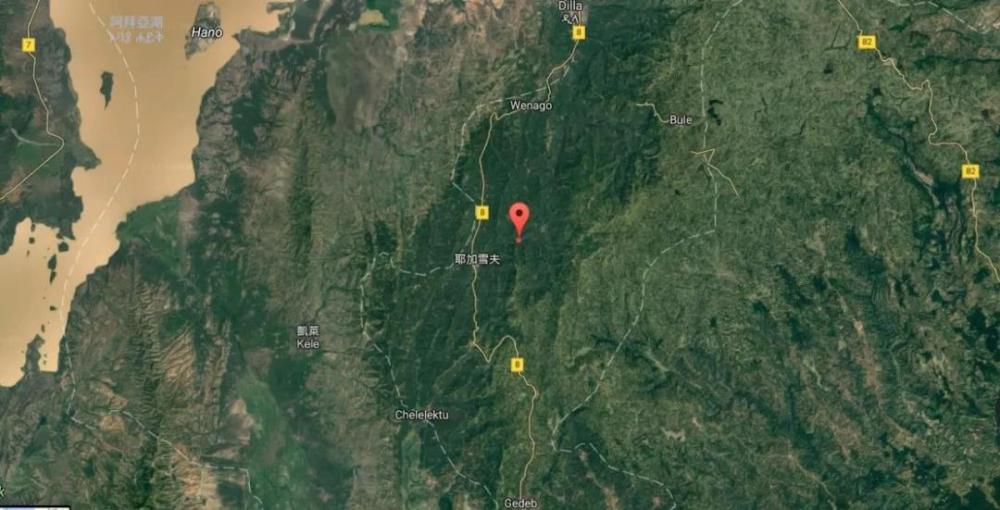
Ethiopian coffee is mostly named after coffee producing areas, and due to different climate and environment, the coffee flavor in each producing area will be different, just like the local flavor in wine. The word "soil" originated from the Sidu monastery in Burgundy, France. After many attempts, the monks have discovered a secret about the flavor. The wine produced by grapes grown in different plots will also have different flavors. Therefore, the local culture not only exists in the world of wine, but also applies in the world of coffee.
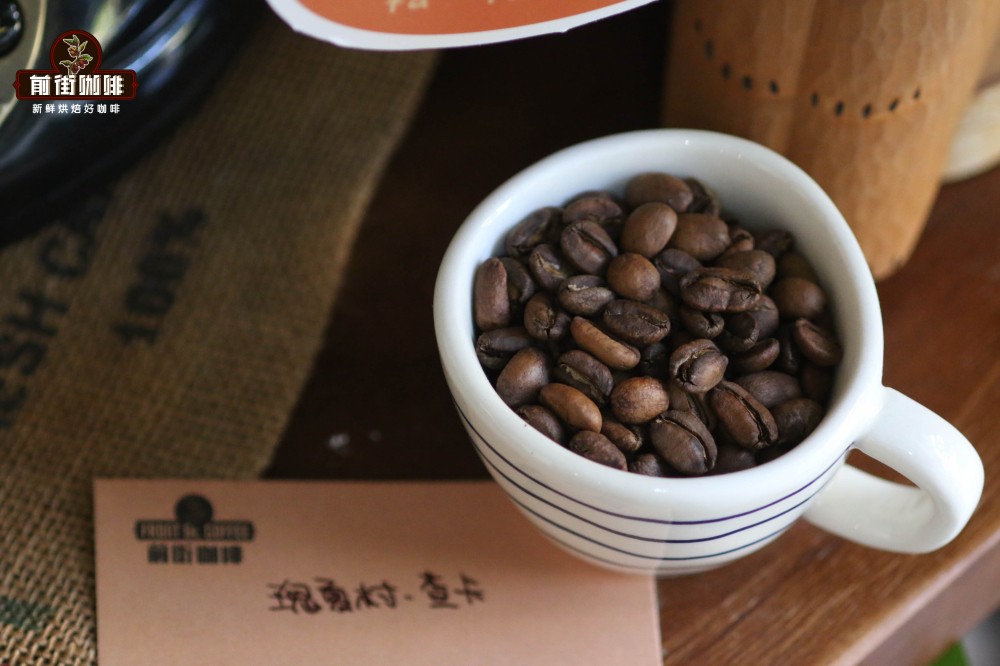
Because of this, in front street, in order to let coffee friends know more about and taste the flavor of Essex coffee, which is the place of coffee origin, there are more than a dozen coffee in front street in different producing areas of Ethiopia countries. such as: Yega Sheffield Red Cherry Coffee, Yega Sheffield Coffee, Sidamo Fakui Coffee, Yejafichaka Coffee, washed Yega Sheffield Coffee, Red Standard and Gold Standard Coffee in Rose Village, and so on. The coffee flavor of each producing area highlights the local flavor of the producing area. The most representative are Yejasefei's water-washed Yejasuffi coffee and Sidamo's sunflower kui coffee.
Ethiopia's coffee cultivation is divided into:
● forest coffee forest coffee (8-10%), coffee trees and other crops coexist in the primeval forest, without any artificial care, farmers will pick coffee fruits regularly.
● forest-semi-forest coffee semi-forest coffee (30-35%), the coffee planting area is between the forest and the range of farmers' lives, coffee trees are naturally produced varieties like forest coffee, and farmers will manage coffee planting areas and grow other cash crops.
● pastoral coffee garden coffee (50-55%), coffee trees are planted around farmers' living areas, and most of them are grown by farmers themselves.
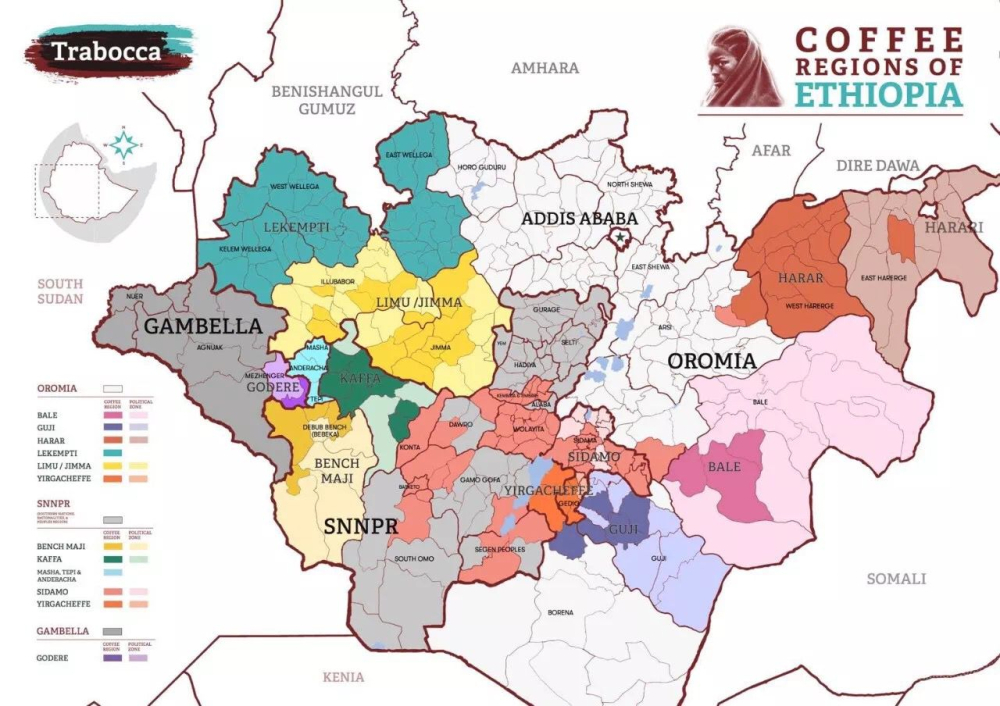
● Plantation Coffee plantation coffee (5-6%), a large private grower, has more treatment facilities and production capacity.
Main producing areas of Ethiopian coffee
Ethiopia is mainly divided into nine major coffee producing areas, namely, Yegashafi, Sidamo, Lim, Hara, Jinma, Irubab, Gimbi-Lecchti, Tibby-Bekaa, and the banks of Lake Tana; among them, the coffee producing areas of Yegashefi and Sidamo are the most famous, and there are many micro-producing areas in the producing areas.
Yejia Xuefei (boutique producing area): 1800-2000 meters above sea level (pastoral coffee system)
Yega Xuefei, located in the northwest of Sidamo, once belonged to the large producing area of Sidamo, and finally became an independent producing area because of its outstanding flavor. Yejasuefi is just a small town for Ethiopia, but for Ethiopian coffee producing areas, the Yejasuefi coffee producing area is not limited to the town of Yegashefi. The Yejashafi coffee producing area includes legal areas such as Vanago, Yega Sheffield, Kochel and Jinrina Ambaya.
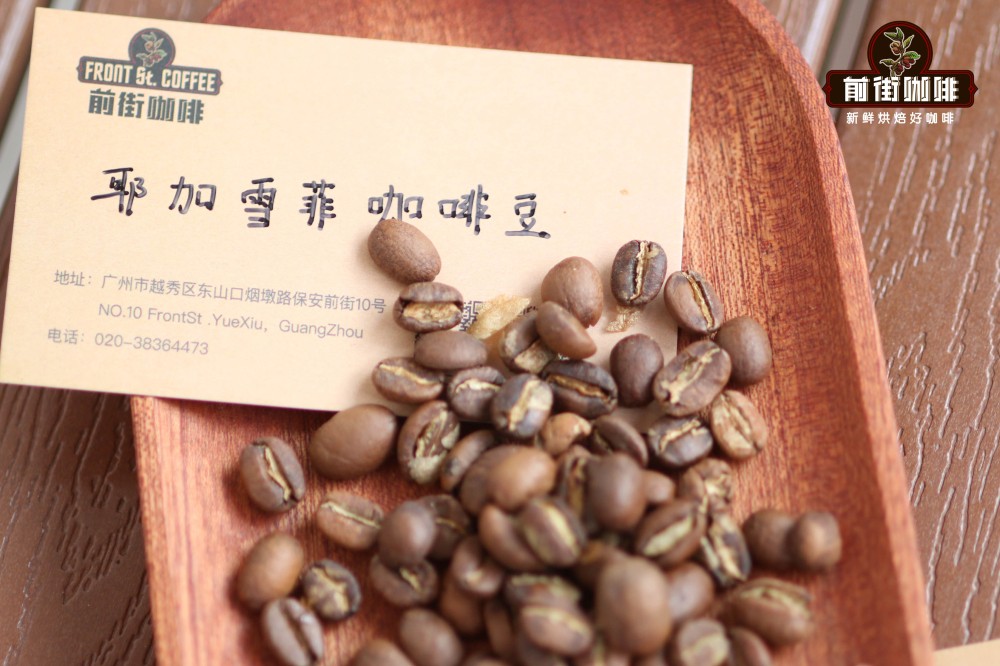
Yega Xuefei is not only a coffee producing area in Ethiopia, but also a synonym for coffee bean flavor. Citrus acid is very lively and bright, with a remarkable delicate aroma of flowers and fruits. It is not only the representative producing area of fine coffee, but also the entry bean of entry-level boutique coffee. Yejia Chuefei is actually constructed by surrounding coffee communities or cooperatives, including Edido Idido, Hafusa Harfusa, Hama Hama and Biloya near Fog Valley Misty valley, all washed with water, but there are also a small number of off-product beans engraved with sun to enhance the charming fruit aroma and mellow thickness.
Sidamo (boutique producing area): 1400-2200m above sea level (pastoral coffee system)
One of the most popular coffee beans in Sidamo is the Hanbela Faqua Coffee, which has a wonderful strawberry cream flavor. Since its debut in the Ethiopian raw bean competition TOH in 2017, this coffee bean has made a splash, breaking Rosa's monopoly in the brewing competition and becoming the only coffee that can compete with it.
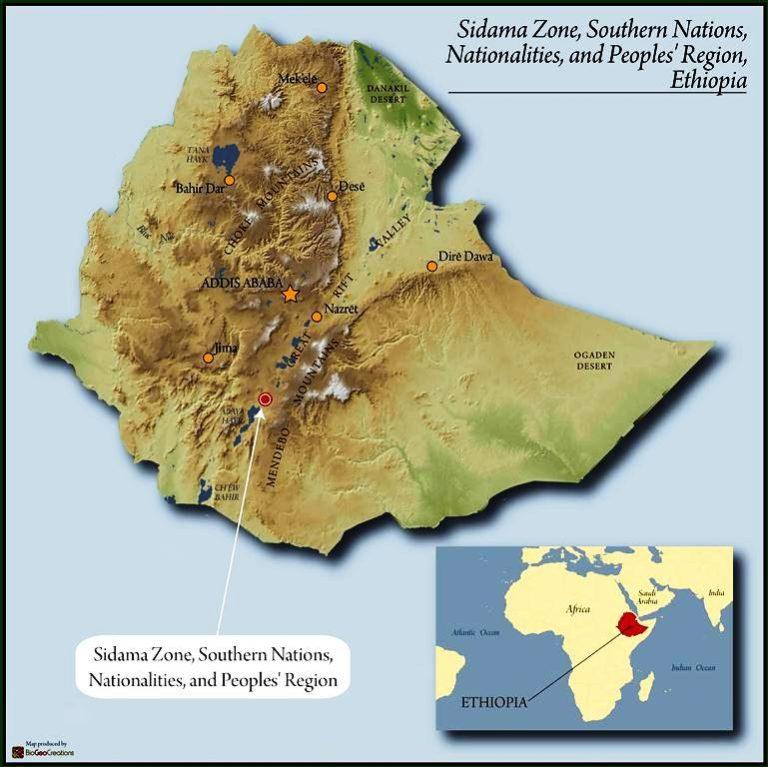
Huakui comes from Humbera, a sub-production area of Guji, which, like Yega Xuefei, originally belonged to Sidamo and was later independent because of its outstanding flavor, but it always belonged to Sidamo in the charming power of Volkswagen Coffee. At present, there are about 20 treatment plants in Hambelane, which are distributed in different villages and estates of different sizes. Coffee is also a crop, and the flavor varies from year to year. In order to distinguish the flavor of coffee from year to year, the name of Sakuran will be from the beginning of Sakuran 2.0, 3.0. To the present Sakuran 6.0.
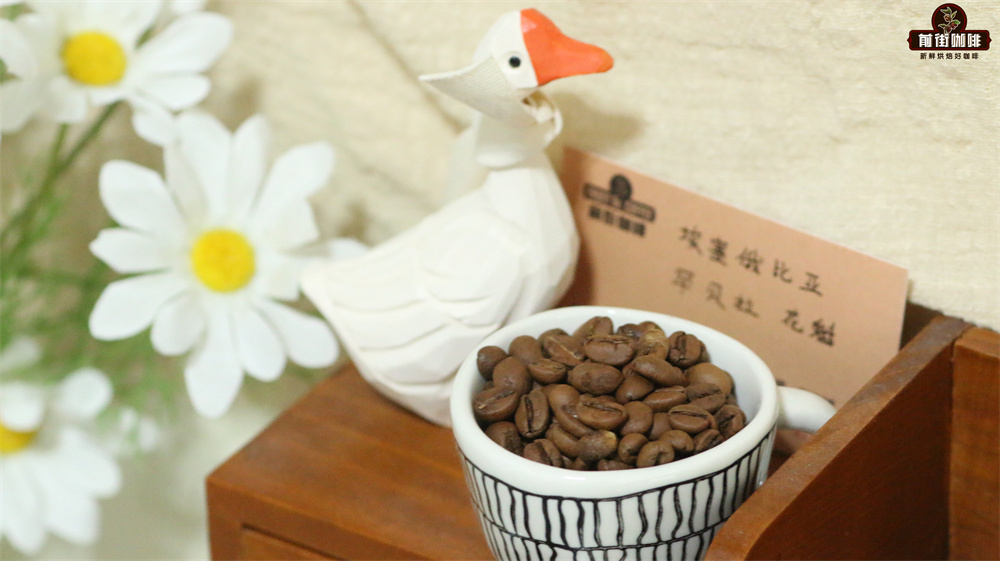
Ethiopian coffee bean varieties
Ethiopia is the birthplace of coffee, so the local coffee varieties are also dazzling. Up to now, nearly 2000 varieties (including 1927 native varieties and 128 imported varieties) have been recorded in Ethiopia. It is precisely because of the amazing number of varieties, on the one hand, it is difficult to identify and classify them, and on the other hand, the Ethiopian government is unwilling to disclose the information of these varieties for the sake of protection, so it is collectively called "native species". Therefore, at present, the common varieties of Ethiopian coffee beans on the market are called Heirloom native species, so the coffee bean varieties exported from Ethiopia are generally called "local native species".
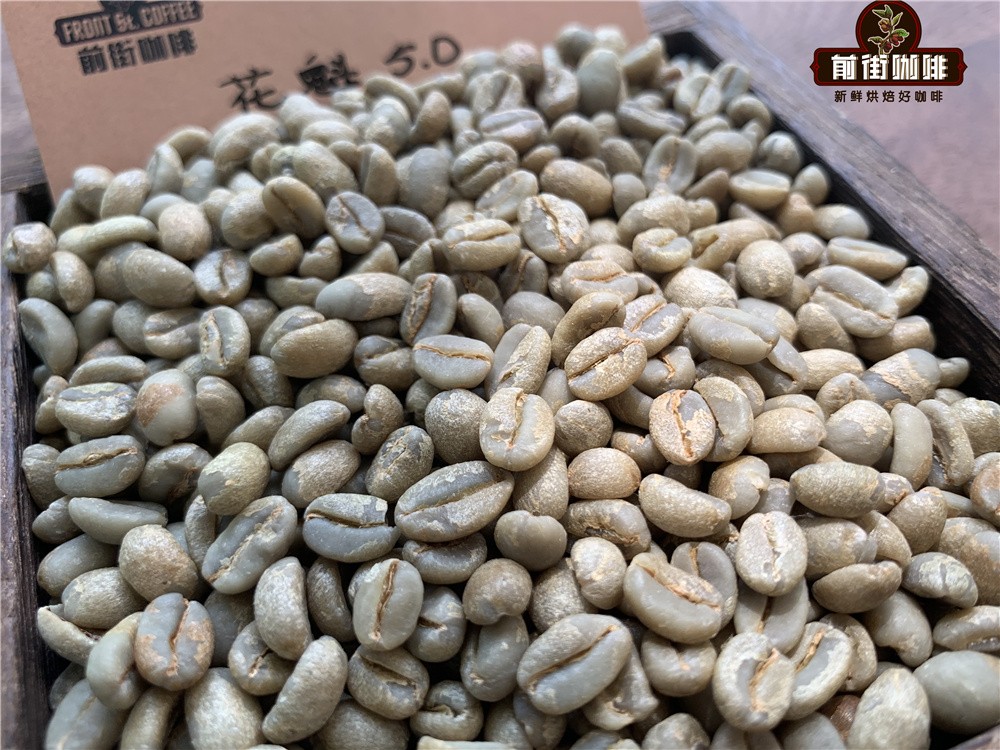
Processing method of coffee beans in Ethiopia
Ethiopia at first used the most traditional and primitive coffee raw bean treatment method of sun treatment. But in 1972, the Ethiopian government and growers introduced washing treatment from Central and South America in order to improve the quality of raw beans and sell them at a good price. Yegashafi is the region with the most abundant water resources in Ethiopia, so this treatment also makes the jasmine and citrus aromas clearer and brighter. It is precisely because of this that Yega Xuefei has become the representative of the world's boutique coffee. Since the 1970s, this area has become the most popular water-washed bean producing area in Ethiopia.
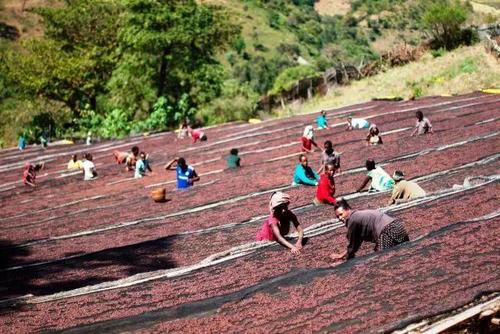
Qianjie coffee believes that the most essential difference between the water washing method and the sun method, the water washing method is the most basic flavor of coffee, which can most directly reflect the special flavor of the producing area, while the sun method will add sweet aroma and fermentation to this basic flavor.
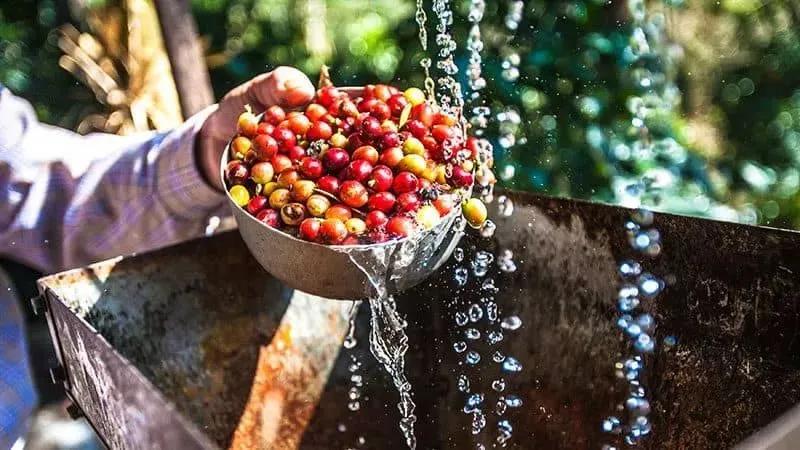
Whether it is the sun or water washing treatment, each has its own advantages. As:-- Lorenzo Perkins, director of education of Cuv é e Coffee, said: "the delicate flower and sweet fruit flavor that can be brought out by a cup of water washed by Yirgacheffe is unparalleled; or the sun-treated Sidamo, sweet and atmospheric, is the most classic top representative of Ethiopian coffee."
Parameters for brewing Sidamo Sakuran Coffee in Qianjie:
Due to the shallow roasting of Sidamo Sakui coffee, the coffee is hard and requires 91 ℃ of hot water to stimulate the floral and fruity flavor of the coffee. Grinding degree Qianjie recommended medium fine grinding degree (Chinese standard No. 20 screen pass rate of 80%). Too thick to extract mellow substances, brewed coffee will appear thin. Too fine is easy to be over-extracted at high water temperature, and the coffee brewed is prone to bitterness.
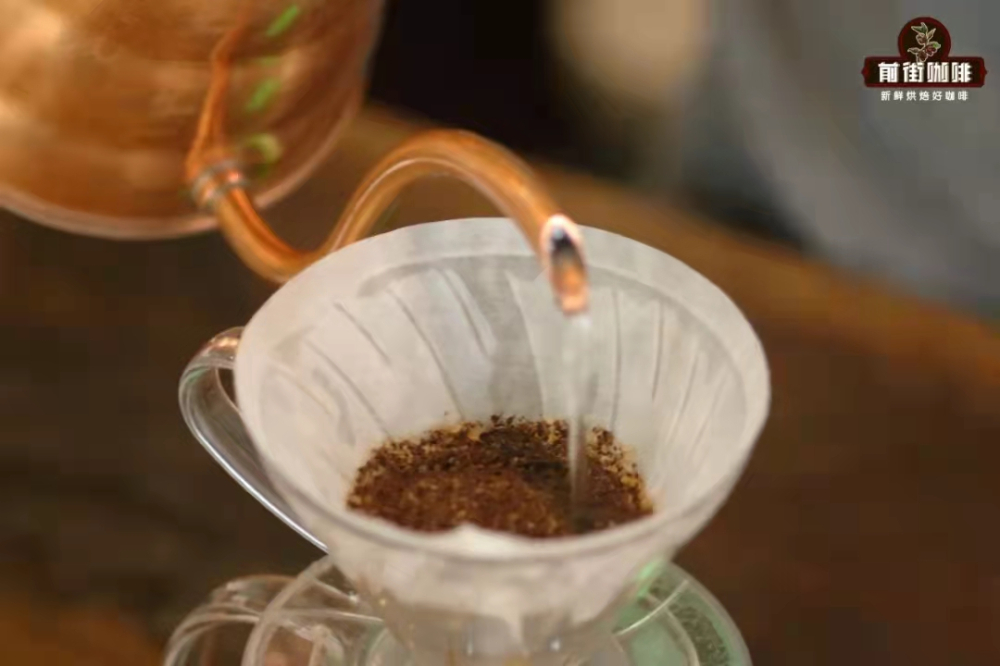
The specific cooking parameters used in Qianjie are: V60 filter cup, water temperature 91 ℃, water powder ratio 1:15, powder quantity 15g, medium fine grinding degree (China 20 standard sieve pass rate 80%)
Qianjie coffee staged extraction: first, use 30g water to fully wet the powder layer in the shape of "hamburger" and steam for 30s; in the second stage, water is injected into 125g at 1: 00 "timer, then stop and wait for the water level to drop to 2 / 3 of the powder layer into the third stage; in the third stage, the water is injected into 225g when the timer is 390 / 40", and the total extraction time for coffee liquid to be completely dropped is 1 cup 3959 ". The total brewing time is 2 minutes 39 percent 00 ". Shake gently after the coffee is extracted, and then taste it until the coffee liquid is fully uniform.
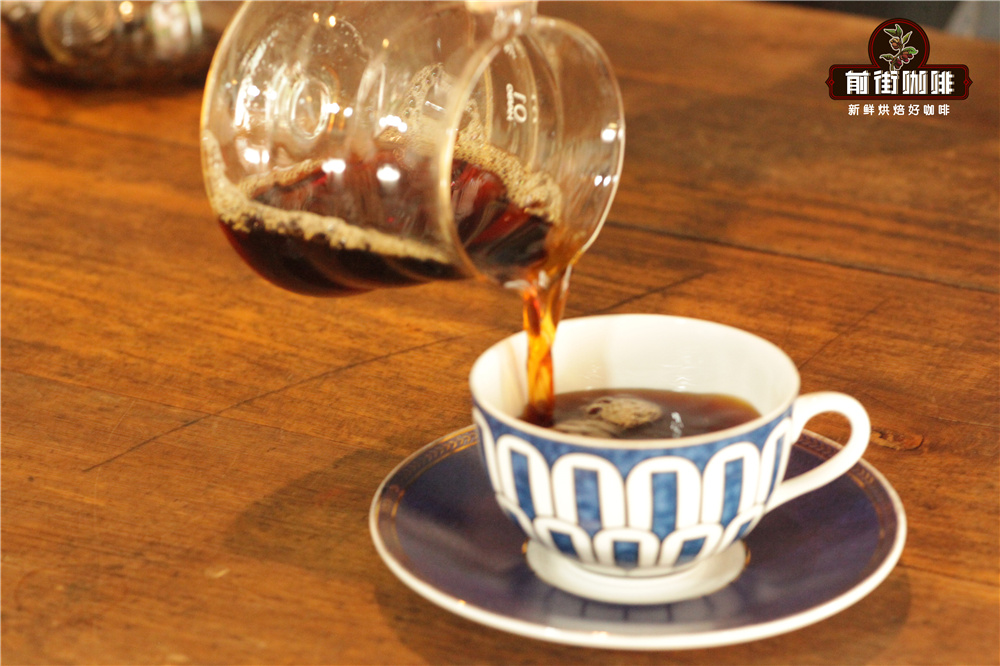
Qianjie Sunshine Sidamo Sakui 5.0Coffee flavor: light fermented wine, caramel will be heavier, taste will be rich and complex, honey sweet, cocoa rhyme with a touch of spice, body thick and lingering.
Suggestions for making coffee in front of the street:
To brew a good cup of coffee, you still need to pay attention to the freshness of the beans. Qianjie has always believed that the freshness of coffee beans has a great relationship with the flavor of coffee, so the coffee beans shipped in Qianjie coffee are roasted within 5 days. The purpose of Qianjie roasting is "freshly roasted coffee", so that every guest who places an order is the freshest coffee when he receives it. The bean cultivation period of coffee is about 4-7 days, so when the guest gets it, it is the time when the flavor is the best.
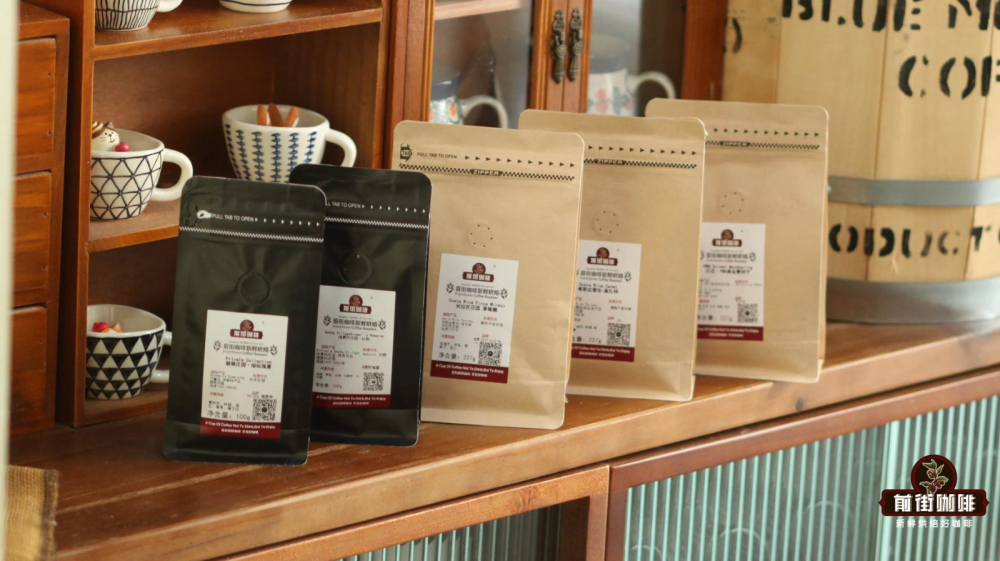
For those who need to be ground, Qianjie warmly reminds you that if the coffee beans are ground in advance, there is no need to raise the beans, because in the process of transportation, the pressure caused by carbon dioxide in the package can also make the coffee flavor round. so you can drink a cup of coffee as soon as you receive the coffee powder. But the coffee powder needs to be brewed in time, because the coffee powder oxidizes more quickly after contact with the air, that is to say, the flavor of the coffee will dissipate more quickly, and the flavor of the coffee is not so good. Therefore, Qianjie suggests buying whole beans, grinding and flushing now, so that we can better taste the flavor of coffee.
Essel coffee has a floral and fruity flavor, which is so light that it makes people drink with endless aftertaste. It even feels that it is not like a cup of coffee, but a cup of fruit tea.
Professional coffee knowledge exchange more coffee bean information please follow the coffee workshop (Wechat official account cafe_style)
For more boutique coffee beans, please add private Qianjie coffee on Wechat. WeChat account: qjcoffeex
Important Notice :
前街咖啡 FrontStreet Coffee has moved to new addredd:
FrontStreet Coffee Address: 315,Donghua East Road,GuangZhou
Tel:020 38364473
- Prev

Ethiopian coffee producing area
Following caf é (Wechat official account vdailycom) found that Beautiful Cafe opened a small shop of its own Ethiopian Coffee producing area has three well-known producing areas in Ethiopia, Harald (Harar), Yiragcheffe (Yega Xuefei) and Sidamo (Sidamo). Sidamo is located in the highlands of southern Ethiopia and adjacent to Kenya.
- Next

Starbucks Ethiopian Coffee
Following Cafe Review (Wechat official account vdailycom) found that Beautiful Cafe opened a small shop of its own Ethiopian Coffee Story: Arabica coffee beans have been popular all over the world since the 19th century. Now our coffee roaster has created a new way to lead us to better taste this precious coffee bean. This comprehensive coffee is mild and smooth, with floral and floral aromas.
Related
- Detailed explanation of Jadeite planting Land in Panamanian Jadeite Manor introduction to the grading system of Jadeite competitive bidding, Red bid, Green bid and Rose Summer
- Story of Coffee planting in Brenka region of Costa Rica Stonehenge Manor anaerobic heavy honey treatment of flavor mouth
- What's on the barrel of Blue Mountain Coffee beans?
- Can American coffee also pull flowers? How to use hot American style to pull out a good-looking pattern?
- Can you make a cold extract with coffee beans? What is the right proportion for cold-extracted coffee formula?
- Indonesian PWN Gold Mandrine Coffee Origin Features Flavor How to Chong? Mandolin coffee is American.
- A brief introduction to the flavor characteristics of Brazilian yellow bourbon coffee beans
- What is the effect of different water quality on the flavor of cold-extracted coffee? What kind of water is best for brewing coffee?
- Why do you think of Rose Summer whenever you mention Panamanian coffee?
- Introduction to the characteristics of authentic blue mountain coffee bean producing areas? What is the CIB Coffee Authority in Jamaica?

